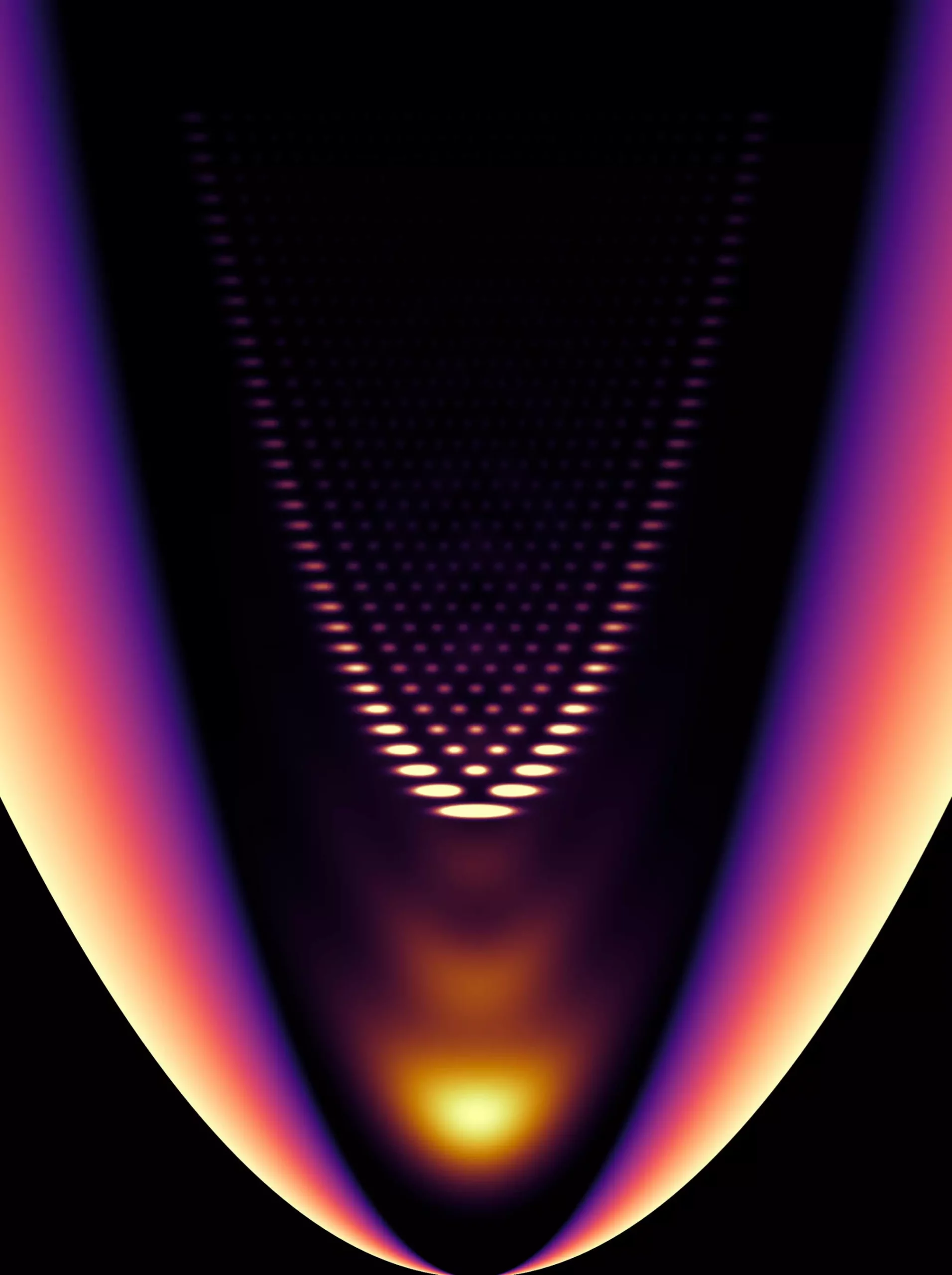Recent advances in the field of quantum physics have illuminated fascinating properties of light, particularly in the form of one-dimensional photon gases. Researchers from the University of Bonn, in collaboration with the University of Kaiserslautern-Landau (RPTU), have successfully created a one-dimensional gas composed of photons, enabling them to explore the intricacies of this exotic state of matter. This breakthrough study, published in *Nature Physics*, presents not only a novel experimental approach but also offers fresh insights into the phenomena associated with low-dimensional systems.
The foundation of this groundbreaking experiment lies in a novel technique for trapping light particles in a confined space. The researchers utilized a small container filled with a dye solution and subjected it to laser excitation. As a result, photons were generated and continually reflected within the walls of this containment. A significant aspect of the experiment was the cooling of photons upon collision with dye molecules, which ultimately led to the condensation of the photon gas.
The innovative element of this research was the introduction of microscopically structured surfaces applied to the container’s reflective walls. By infusing these surfaces with a transparent polymer that featured specific protrusions, the researchers effectively manipulated the dimensionality of the photon gas. This method resembles a gutter, which channels the flow of water, thereby enabling photons to exhibit one-dimensional characteristics as they became increasingly confined.
The concepts of dimensionality and phase transitions are pivotal in the realm of physics. In traditional two-dimensional systems—like water freezing at zero degrees Celsius—there exists a clear temperature threshold marking a phase transition. However, this research revealed a stark contrast within one-dimensional photon gases.
In a one-dimensional setting, thermal fluctuations play a crucial role and are significantly amplified. The study highlighted that these fluctuations could disrupt the coherence of the system, resulting in a “smeared-out” phase transition rather than a sharp, well-defined one. Such behavior suggests that as the dimensionality decreases, the intricacies of thermal dynamics become more pronounced, complicating our understanding of transitions at lower dimensions.
Significance of Thermal Fluctuations
The researchers emphasized that these thermal fluctuations, while minor in two dimensions, possess a transformative power in a one-dimensional context. These fluctuations can induce substantial variations, leading disparate regions of the gas to behave differently. As a result, one-dimensional photon gases lack a well-defined condensation point, making the transition process particularly fascinating to study.
The results of this research provide insight into degenerate quantum gases, which are governed by quantum mechanical principles similar to their two-dimensional counterparts. Here, the behavior of light can be compared to a state where “icy water” exists without completely freezing—indicating a complex state of matter that piques the interest of physicists.
While the findings currently reside within the scope of basic research, the implications of understanding one-dimensional photon gases could pave the way for innovative applications in quantum optics. By elucidating the behavior of quantum gases as they transition between different dimensions, scientists unlock potential advancements in various technologies—ranging from quantum computing to improved imaging techniques.
Future exploration may involve fine-tuning the polymer structures to delve deeper into phenomena contingent upon dimensional changes, thereby expanding the frontiers of quantum mechanics. As researchers continue to investigate these low-dimensional systems, the findings may culminate in practical applications that harness the peculiar behaviors of light.
The successful development of one-dimensional photon gases marks a significant milestone in the understanding of light as matter. Physicists at the University of Bonn and RPTU have not only provided empirical evidence supporting theoretical models but have also set a foundation for future research that might unravel further mysteries of quantum systems. As they navigate the complex terrain between light and quantum behavior, the scientific community anticipates new discoveries that could revolutionize our grasp of fundamental physics and its diverse applications.


Leave a Reply